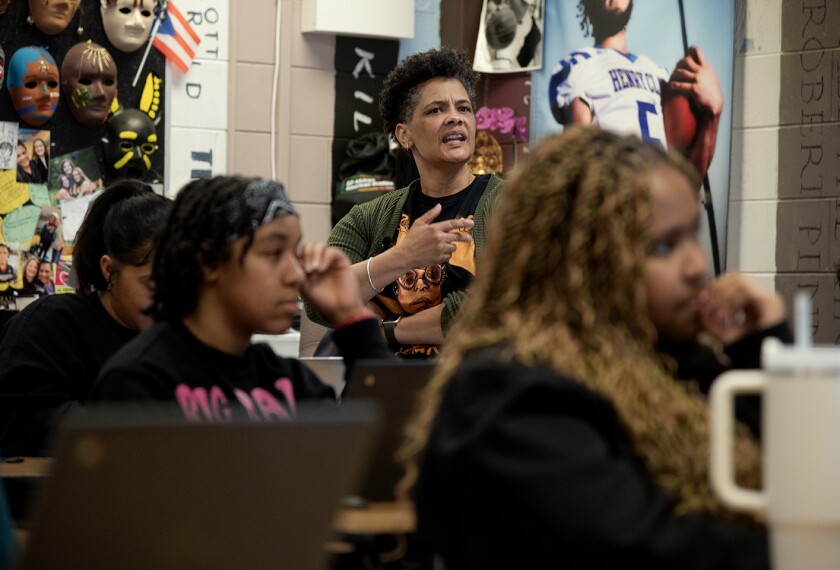In education circles, STEM—the teaching of science, technology, engineering, and mathematics—has been gathering, for want of a better descriptor, “alpha” status. Not only has President Barack Obama announced a $250 million public-private initiative to recruit and train more STEM teachers, but also the U.S. Department of Education’s Race to the Top Fund grants competition is giving bonus points for applications that stress STEM instruction.
This funding is on top of the nearly $700 million the federal government already spends on science and math education programs within the National Aeronautics and Space Administration, the National Science Foundation, and other agencies. Factor in what’s earmarked by individual states for STEM and a picture emerges of where a lot of tax money is rightfully going.
This generous support is being allocated in the belief (or fear) that the United States is becoming less competitive and secure, that we are losing our global-leader status in STEM fields and being eclipsed by other countries, mostly in Asia.
Yet, in the midst of all the STEM frenzy, we may want to do something riskier, and more imaginative, to save the country: turn STEM funding into STEAM funding. Inserting the letter A, for the arts, into the acronym could afford us even greater global advantage.

Many may be puzzled by this statement, considering that the arts have held a traditionally marginalized place in both American society and the school curriculum. And, in the eyes of some, support for the arts has a dubious payback, especially in areas of national concern such as defense, homeland security, and technology. The arts are something we do when we stop being serious. Friday afternoons spent drawing turkeys, pumpkins, and valentines in more classrooms than one might think can attest to this.
But just consider the following. A 2008 study from the National Endowment for the Arts, “Artists in the Workforce,” showed that individuals involved in the arts represent a sizable branch of the labor force, only slightly smaller than the total number of active-duty and reserve personnel in the U.S. military. What may also be surprising to some is that artists make up a larger occupational group than lawyers, medical doctors, or agricultural workers. The size of the artistic community gives it an astonishing $70 billion aggregate annual income. The country’s $316 billion communication and entertainment business employs a diverse range of artists, including musicians, actors, filmmakers, videographers, and architects. It is probably safe to say that most of these people prepared for their careers by participating in some sort of arts education program.
The sense of urgency attached to STEM education is understandable. And embedded in the Obama administration’s plans for it are praiseworthy ventures that include increasing professional-development opportunities for teachers, creating summer STEM academies for students and instructors, and preparing more of the nation’s undergraduates to enter math and science classroom teaching. But to endorse only these subject areas as worthy of serious and immediate incentives overlooks the sense of urgency many see for reaching students who excel in the arts but are having their talents and needs ignored. This emphasis may also hasten, however inadvertently, the lamentable curriculum narrowing happening across the country.
Perhaps if we tried to achieve a synergistic balance between the arts and sciences we could curtail debates that have traditionally turned the issue of arts funding into an us-against-them argument. The ancient Greeks promoted not a hierarchy of subjects, but a continuum of learning. They made no firm distinction between the arts and the sciences, so why should we?
That arts education has not enjoyed a growth in status is somewhat surprising. Empirical evidence continues to accrue showing that involvement with the arts leads to measurable cognitive gains. Studies probing the positive effects of music instruction on verbal memory and spatial skills, for example, have been very promising. Training in a musical instrument has also been demonstrated to enhance both verbal ability and nonverbal reasoning, and involvement with visual art has seemed in research to intensify students’ observational powers and analytic prowess. Other outcomes often mentioned in studies as a result of arts involvement are better questioning skills, more-focused periods of intense concentration, and greater understanding that problems can have multiple answers.
If creativity, collaboration, communication, and critical thinking—all touted as hallmark skills for 21st-century success—are to be cultivated, we need to ensure that STEM subjects are drawn closer to the arts."
Research conducted by my colleagues and I has looked at the role of music training on the development of literacy skills, specifically vocabulary and verbal sequencing. The outcome of one of our studies indicated that the fusion of scaffolded music instruction with a balanced literacy program from kindergarten to 2nd grade resulted in superior cognitive performance in those students who were musically trained, when compared with those students who were not.
The funding incentives for STEM education are good news. Any assistance to schools in upgrading curriculum quality provides significant benefits for all of us. But now, as we enter the second decade of the 21st century, we must initiate a curricular vision that meets a new spectrum of vital interests. If creativity, collaboration, communication, and critical thinking—all touted as hallmark skills for 21st-century success—are to be cultivated, we need to ensure that STEM subjects are drawn closer to the arts.
If American schools are to become a leading force in guaranteeing that the country is well prepared to negotiate the complexities of the future, they must be encouraged to make every student’s education one that is broad and comprehensive. And in meeting this goal, we might take a cue from Albert Einstein. While Einstein’s reputation undoubtedly rests on his scientific contributions, a lesser-known fact about him was his estimable musical ability. This great physicist, theoretician, and STEM-exemplar was known for revering Bach and Mozart, and to have once said: “I know that the most joy in my life has come to me from my violin.”
What better testimony than this to propel us toward making the journey from STEM to STEAM a national priority.




